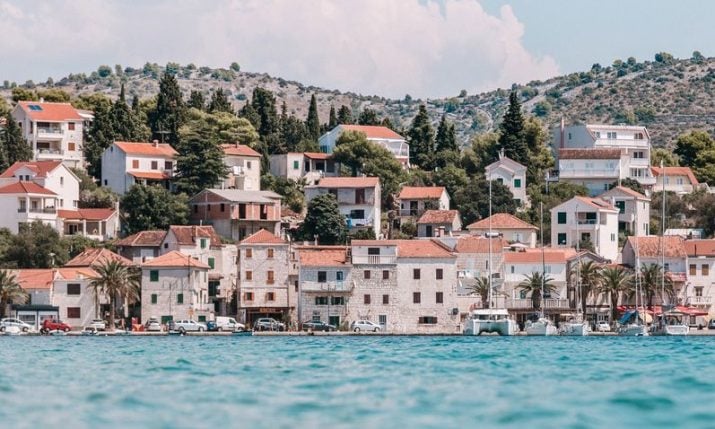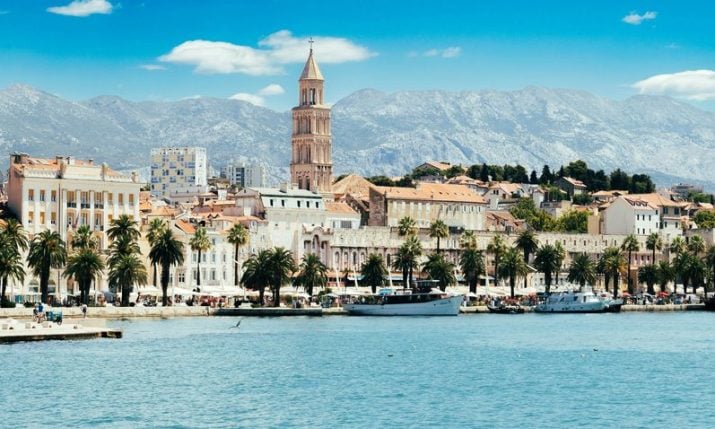Interview: Expert reveals what’s behind Croatia’s soaring property prices
- by croatiaweek
- in Business

(Photo: DOMinvest grupa)
We’re currently witnessing a frenzy in real estate prices in Croatia. Sometimes it feels like they’re skyrocketing day by day, and often we blame investors, the government, the workforce… However, the price per square meter we want to buy involves much more than we think.
The question of “why prices are soaring” has driven us to explore the reasons behind it and what all factors into that price, which many will be paying off until retirement.
We’ve chosen a construction expert as our interviewee. Saša Perko is a master engineer in civil engineering and the director at DOMinvest group.
“I agree that the increase in real estate prices is unexpected. While in most EU countries prices are dropping by around 5-10%, in Croatia, the average annual increase is around 10%. There are several main reasons for this; undoubtedly, the most significant is inflation, which even this year stands at a high 5%.
In construction, it’s even more significant because of the rising cost of materials. On the other hand, due to the high demand for construction workers, service prices are rapidly increasing. For some services that you could have gotten for reasonable prices four years ago, today the price has doubled, and often more.
EU tenders and earthquake reconstruction significantly contribute to the rise in construction service prices. Land prices have dramatically increased, and the focus on unjustified prices should be directed towards land prices. The land you could have bought four years ago is the same as it is today, yet the price of that same land has doubled.
For example, a plot we bought in 2020 in Trešnjevka, Zagreb, cost 450€/m2 at the time; today, in a similar location, we can’t buy below 900-1000€/m2. I would say that here, in all this madness, the opportunity is being exploited the most, but unjustifiably,” explains Saša Perko, who claims that it’s challenging to determine the real price of real estate.

Saša Perko (Photo: DOMinvest grupa)
Whether a property is visually and functionally attractive (meaning more expensive architecture and design), its location, the type of land (flat or hilly terrain), who built it, who the developer is, and last but not least – how much profit that developer wants to make.
The market is more or less real because the market sets the price. If nobody buys at such prices, they would decrease – as is currently the case in Germany.
According to our interviewee, the biggest problem lies in the supply of quality real estate. In Zagreb, you can almost count quality plots on one hand, and owners ask for enormous sums for such properties.

(Photo: DOMinvest grupa)
When a developer calculates the cost of their capital, the engagement in the entire project (a project cycle of 3 years), and the profit they can make, in the end, they are not satisfied. But to be more precise, we sought a concrete answer to explain what exactly goes into the price per square meter.
“First, I would like to mention the first ‘expense’ in the price per square meter, and that is VAT, which goes directly to the state. So, if the net price per square meter of an apartment is 3,000 €, almost transactionally, 600 € goes to the state, leaving the developer with 2,400 € to cover all expenses and potential profit.
By far the most significant cost is construction, which accounts for 40-45% of the investment. It’s necessary to mention that the developer builds the building according to GFA (which includes wall areas, stairs, corridors, and boiler rooms), and only sells net square meters.
Construction no longer costs 1,200 – 1,400 €/m2, but achieves 20% fewer net square meters, so the construction cost in that case is 1,500 – 1,750 €/m2. Then there’s the land, design and technical supervision, connection costs, municipal and water contributions, marketing and sales costs, and other indirect costs that can amount to 1-2% of the investment,” explains Saša Perko, who also clarified why real estate prices are not the same in Zagreb, on the coast, or in Slavonia.
“Unfortunately, material prices are not the same in Croatia either. Where it’s harder to bring them or where significantly more is used, they are more expensive. The following factors have the most influence on high real estate prices in Zagreb or on the coast: location, services, and materials that are more expensive on the coast, especially on islands and where there is a lack of competition.

(Photo: DOMinvest grupa)
A couple of examples to understand high prices on the coast: construction companies cannot work for 3-5 months, so it’s not easy to organise such a work system. Also, how to produce concrete on an island? How to bring tons of reinforcement to an island? That’s why material prices are higher.
Before construction starts, it’s often necessary to excavate in the rock on the coast, the terrain is hilly, so many retaining walls are needed, deep foundations may be needed… There are many reasons why that price can skyrocket, and it’s not visible on the surface,” Perko explained.
If you’re wondering whether it’s more favourable to build a house or buy one already built – we have an answer for that too. If you’re buying a “finished product,” you’ll end up paying about 15% more than if you build it yourself.
Of course, the question also arises: is my time, energy, and ultimately health worth that 15% or not? Building nowadays is an extremely exhausting process because it’s very unpredictable and full of challenges on all sides, which people often underestimate.
People often wonder whether they should buy property now or wait for prices to drop! Everyone hopes for a steep drop, but… “Market cycles exist; sometimes property is more expensive, sometimes cheaper, but if you look at it long term, there’s no better time to buy than today. If inflation is at the standard 2-2.5%, in 40 years that property will be worth at least 2-3 times more. If inflation is higher, then perhaps it will be worth 5-10 times more than today.

(Photo: DOMinvest grupa)
If you plan to get rich quickly, then real estate is definitely not the best investment choice, regardless of the time or cycles. I don’t like to speculate, but I would say that prices won’t significantly drop. If there is any correction, it will be local and around 2-5%. I would dare to predict that prices will increase in the short term, up to 3 years. We are a very interesting market for Europe; I hear this daily from our foreign partners, which only confirms my thinking,” our interviewee is honest.
Saša Perko is the head of the DOMinvest group, which is the parent company for three subsidiary companies engaged in design (DI plan d.o.o.), construction (DOMinvest d.o.o.), and real estate project development (DOMinvest development d.o.o.), with two more companies planned within the short to medium-term to complete the range of services in the construction sector.
If you’re building or planning to build, you can contact them through their website.


